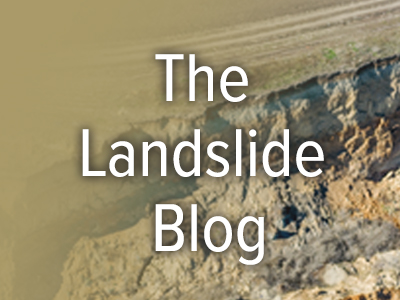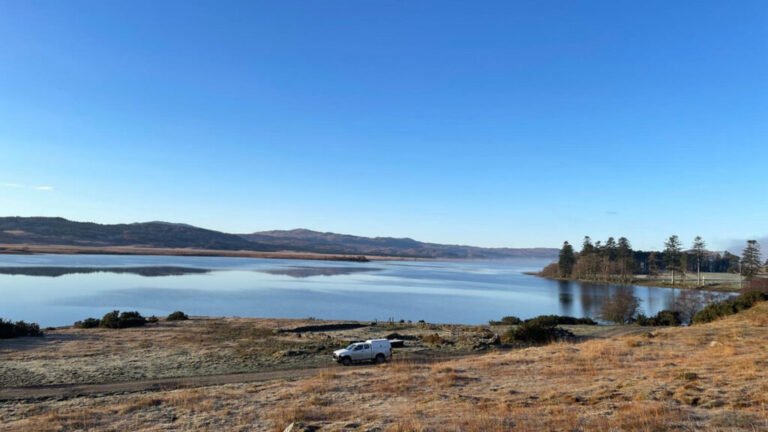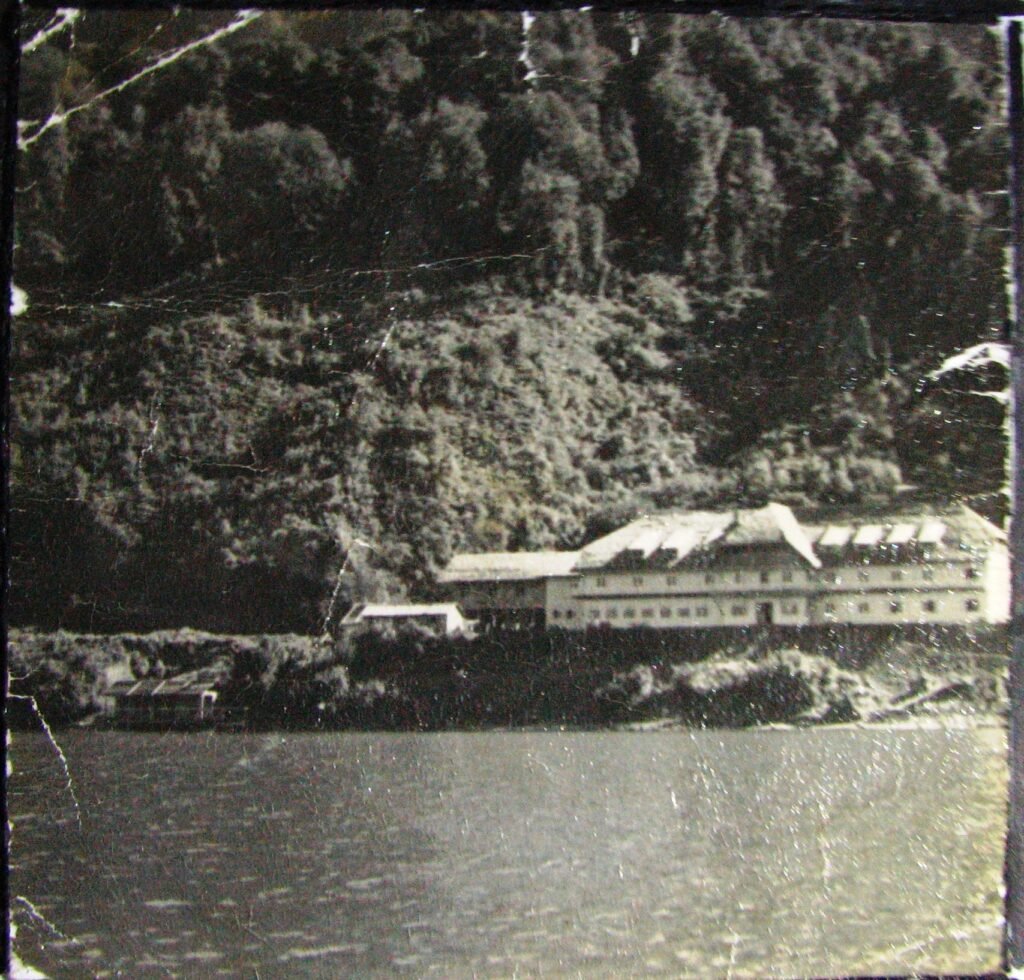
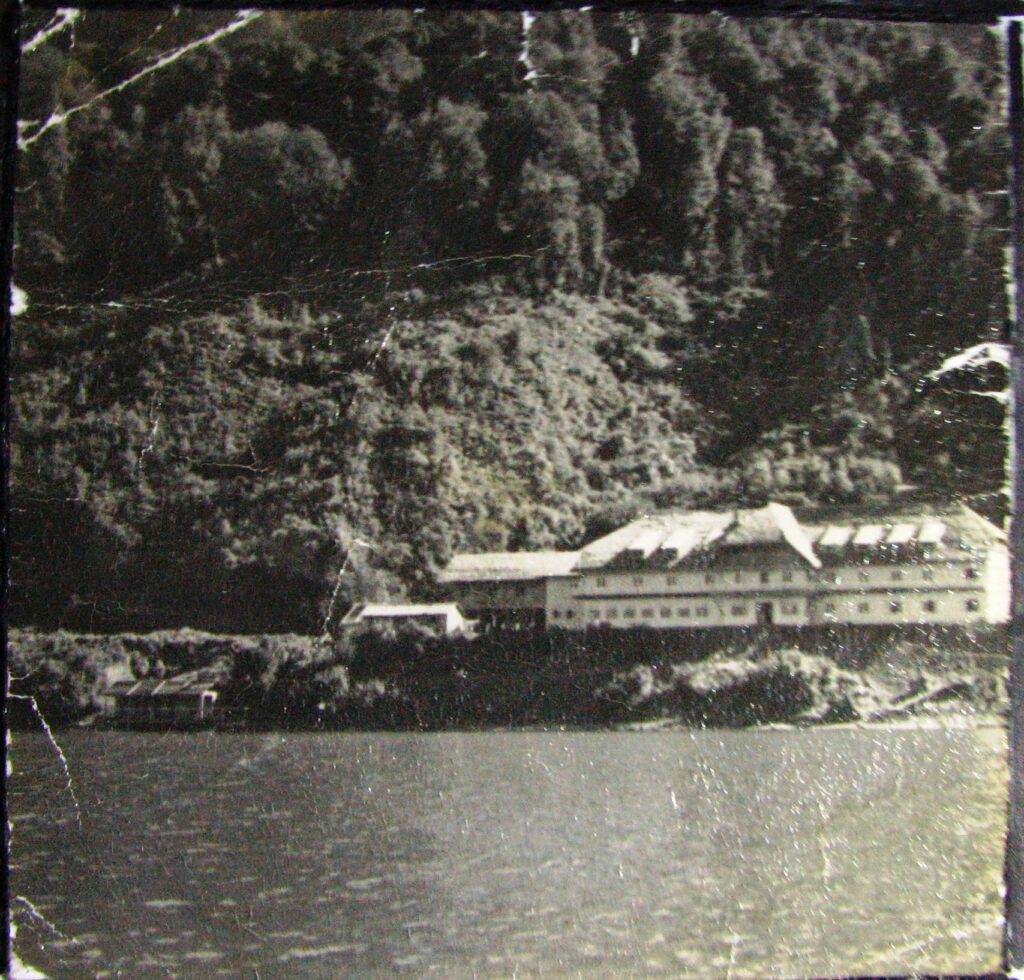
Reconstruction of landslides on the banks of Lake Rupanco in Chile, triggered by the 22 May 1960 Mw-9.5 earthquake, suggests that a slope failure with a volume of 161 million cubic metres triggered a tsunami with a maximum amplitude of 33.3 metres. About 120 people were killed.
A very interesting paper (Quiroga et al. 2025) has just been published in the journal Landslides that examines combined landslide – tsunami threats at Lake Rupanco [40.82, -72.50] in Chile. The context is a series of landslides, and a resultant tsunami, that was triggered by the 22 May 1960 Mw=9.5 Great Chilean earthquake. The paper reconstructs that landslides and models the tsunami that they generated.
This event is particularly interesting as the loss of life was significant. Quiroga et al. (2025) document about 120 fatalities:-
“The most severely impacted area was Las Gaviotas, a settlement situated on the southeast shore…, where tsunami run-up heights reportedly exceeded 10 m, according to eyewitness accounts… One of the most significant losses was the destruction of the popular Termas de Rupanco hotel located near geothermal springs …, which was swept away by the landslides, resulting in 11 confirmed fatalities … At that time, a road was also under construction along the southern shoreline to connect Osorno with Las Gaviotas; both the road and several worker camps were destroyed…”
The Chilean Enterreno site has a photograph of the Termas de Rupanco hotel prior to the tsunami:-

Quiroga et al. (2025) have tracked the source of the tsunami to a series of landslides that occurred on the north side of Lake Rupanco. The scars of these failures are still very visible on Google Earth:-
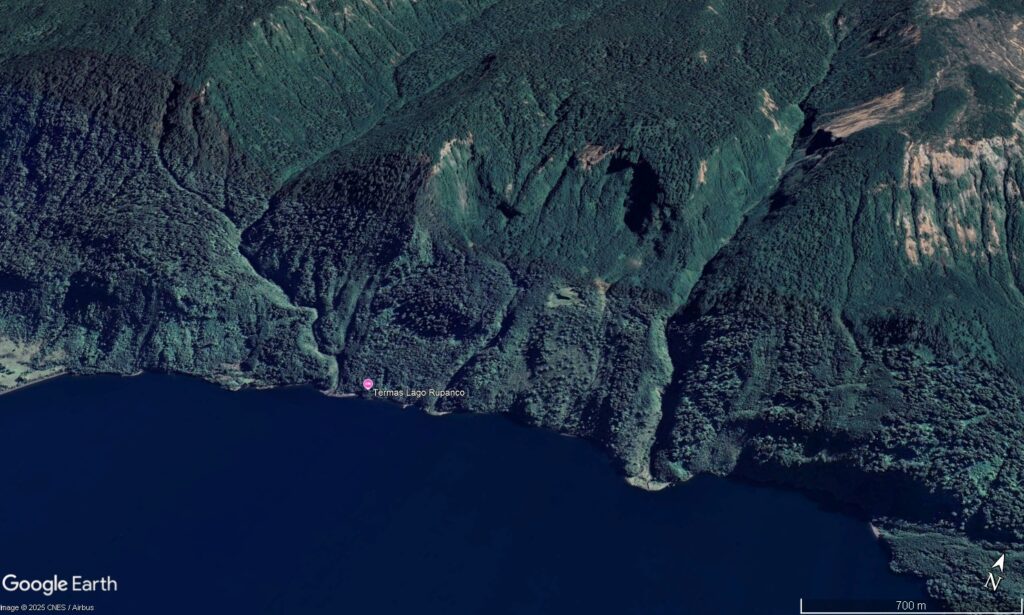
Quiroga et al. (2025) have identified eight landslide scars in this area, of which the most significant is the bowl-shaped scar in the centre of the image above. This is the most likely source of the tsunami. It is a rotational failure with lower runout zone, with a volume of 161 million m3. Of this volume, 12.1 million m3 became submerged to generate the wave.
Reconstruction of the wave suggests that it has a maximum amplitude of 33.3 metres close to the landslide itself. At Las Gaviotas, where the hotel was located, the wave had a maximum amplitude of 8.6 metres, arriving 261 seconds after initiation.
This elegant and useful paper illustrates well the threat posed by large landslides into lakes. For those located in the hotel, the events would have been terrifying, starting with a major earthquake for which the shaking would have been intense and long-lasting, followed by the noise and dust generated by the collapsing slopes, and finally the impact of this enormous tsunami. Keeping people safe in such circumstances is a very major challenge.
Reference
Quiroga, J.P., Aránguiz, R., Hernández-Madrigal, V.M. et al. 2025. Reconstruction and numerical modeling of historical and paleo-tsunamigenic landslides in Lake Rupanco, Chile. Landslides. https://doi.org/10.1007/s10346-025-02629-1.
Text © 2023. The authors. CC BY-NC-ND 3.0
Except where otherwise noted, images are subject to copyright. Any reuse without express permission from the copyright owner is prohibited.
